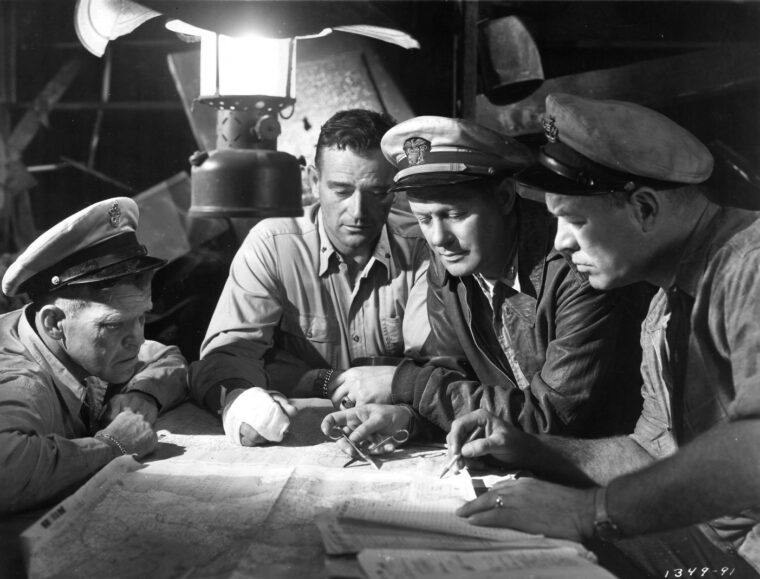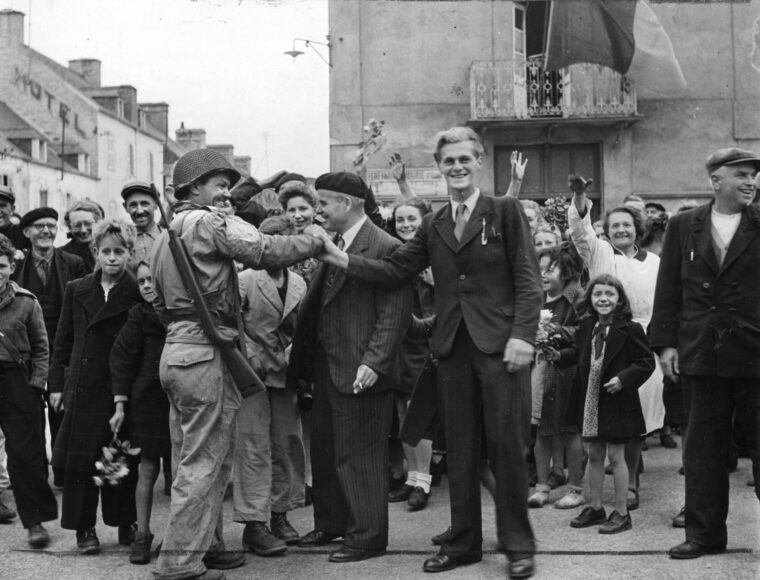
Normandy
Sub Hunters Over the Bay of Biscay
By Patrick J. Chaisson“Am over enemy submarine in position …”
Cut off in mid-transmission, this contact report came from a U.S. Read more

Normandy
“Am over enemy submarine in position …”
Cut off in mid-transmission, this contact report came from a U.S. Read more

Normandy
The Landing Craft Mechanized (LCM) carrying Army engineers and Navy beachmasters hit a mine on its way into Omaha Beach. Read more

Normandy
With such award-winning films as Stagecoach, Young Mr. Lincoln, Drums Along the Mohawk, The Grapes of Wrath, The Long Voyage Home, and How Green Was My Valley behind him, John Ford was one of Hollywood’s most respected directors by the time World War II broke out in 1939. Read more

Normandy
World War II made a disparate trio of allies —British Prime Minister Winston Churchill, Soviet Marshal Joseph Stalin, and American President Franklin D. Read more

Normandy
For 33 months beginning in 1942, the U.S. Eighth Air Force and its precision daylight bombing strikes against German targets in Europe tried to pound the Third Reich into submission. Read more

Normandy
War spared no one. As modern armies clashed in France’s Normandy countryside, French civilians found themselves in the crossfire or on the receiving end of bombs and heavy weapons. Read more

Normandy
The Germans were gone. After more than four years of occupation, the soldiers of the Wehrmacht had been evicted from France’s Normandy region by the American and British armies. Read more

Normandy
American General George S. Patton, Jr., and German Field Marshal Erwin Rommel both demonstrated the masterful employment of armored forces in many World War II military campaigns. Read more

Normandy
The image of the Scottish piper standing erect under fire was commemorated in the film The Longest Day nearly two decades after the D-Day landings of June 6, 1944. Read more

Normandy
No Allied amphibious invasion in World War II left such a bitter legacy as Operation Jubilee, the ill-fated British-Canadian raid on the northern French port of Dieppe on Wednesday, August 19, 1942. Read more

Normandy
“Why the hell am I here?” Lt. Richard Winters asked himself as he pulled out of his parachute harness in the first hours of D-Day. Read more

Normandy
Many people who never knew John Hanlon personally may remember him as that paratrooper who took the sheets back to Bastogne. Read more

Normandy
Not all of the 68 infantry divisions available to the U.S. Army during World War II were made up of draftees and enlistees. Read more

Normandy
When American soldiers landed in France in June 1944 as part of the great Allied crusade to liberate Europe, they were well trained, fully equipped, and brimming with confidence. Read more

Normandy
In 1934 the British War office accepted a new aircraft design eventually designated the Hawker Hurricane Mark 1. Read more

Normandy
On the morning of June 6, 1944, the 2nd Ranger Battalion, commanded by Lt. Col. James Earl Rudder, began its ascent of a sheer 100-foot precipice called Pointe du Hoc. Read more

Normandy
Ernest Taylor Pyle was born August 3, 1900, in Dana, Indiana. He came from a farm family. Read more

Normandy
In an August 14, 1944, General Bernard L. Montgomery was facing a manpower crisis, unable to drive the Germans out of Caen. Read more

Normandy
It was the storm that forced the battle. On June 19, 1944, a massive gale hit the English Channel, sweeping in from the west, hitting the gigantic artificial harbors the Allies had built on their D-Day invasion beaches. Read more

Normandy
The U.S. 29th Infantry Division was formed in July 1917, three months after America entered World War I. Read more